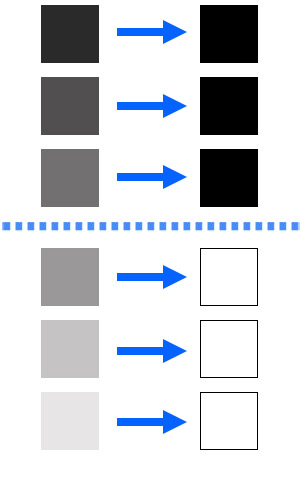
Image thresholding is a process in which digital images are simplified from a full spectrum of colors or grayscale shades, down to a smaller set of selected shades. The example at right shows the most basic form of thresholding, in which any pixel below a certain brightness is converted to pure black, and any pixel above a certain brightness is converted to pure white. This process would produce a bitonal image, also known as a binary image.
This is only one example of image thresholding — it is possible to convert images using multiple thresholds, resulting in grayscales of many shades, or types of color images.
In check image capture, the simple process at right is used for thresholding, because bitonal images are the legal standard for electronic check clearing in the United States and many other countries. The thresholding process is of central importance in generating a black-and-white image that will be legible to the receiving institution.
Since paper checks (and money orders) can come in all different colors, backgrounds, and contrast levels, check scanners have had to incorporate ways to accommodate wide variations in the quality of the document. One way they accomplish this is through adaptive thresholding, in which the scanner generates several different images using different brightness and contrast levels, and the clearest one is chosen for conversion to black-and-white. More advanced techniques might include selective thresholding, which means different contrast settings are applied to different parts of the same document.





